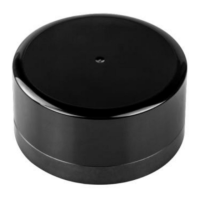
Do you have a question about the LSLIDAR M10 and is the answer not in the manual?
| Channels | 16 |
|---|---|
| Accuracy | ±3 cm |
| Laser Wavelength | 905 nm |
| Laser Safety | Class 1 |
| Rotation Speed | 5-20 Hz |
| Data Interface | Ethernet |
| IP Rating | IP67 |
| Model | M10 |
| Category | Accessories |
| Weight | 1.0 kg |
| Field of View | 360° horizontal |
Warning about disassembling, watching laser, and unauthorized opening.
States compliance with safety standards IEC60825-1 and CFR.
Explains the Time of Flight (TOF) method for distance measurement.
Describes how distance and angle data form a 2D representation of the environment.
Details the optical aspects of the LiDAR, covering principles and structure.
Specifies the laser wavelength, peak power, and average power.
Describes the telescope-type optical structure and coordinate system definition.
Explains the light spot shape, divergence angles, and calculation.
Provides mechanical dimensions and installation guidance for the LiDAR.
Details the external physical interface and connector specifications.
Provides detailed dimensions for the LiDAR side connector.
Lists the pin assignments and descriptions for the LiDAR interface.
Explains the function and components of the adapter board for debugging.
Introduces the Windows software for point cloud display and configuration.
Describes the main components of the point cloud display software interface.
Guides on selecting the serial port and receiving real-time LiDAR data.
Explains the functions of various buttons and menus in the software.
Details the data sheet content including PointID, coordinates, and timestamp.
Provides instructions on navigating and interacting with the point cloud display.
Guides on saving and managing offline LiDAR data.
Shows how to view software version and company information.
Addresses issues with display software and dual display card settings.
Introduces ROS driver usage for LiDAR display and configuration on Linux.
Guides on checking USB device connection and permissions for the ROS driver.
Provides steps for setting up and running the ROS driver.
Specifies packaging requirements for safe transportation of the LiDAR.
Provides guidance on securing the LiDAR and heat dissipation during installation.
Recommends optimal temperature and humidity for product storage.
Details the procedure and tools for cleaning the LiDAR enclosure.